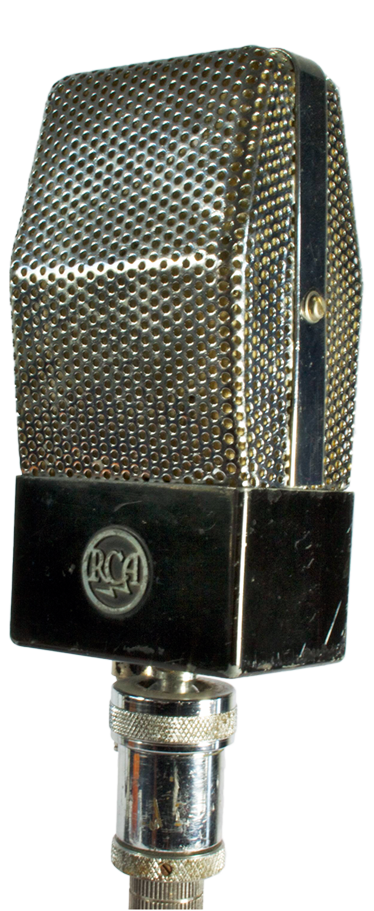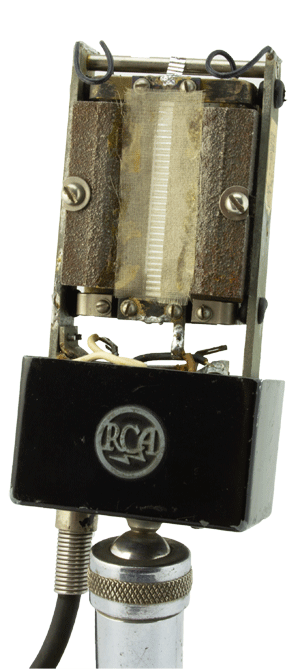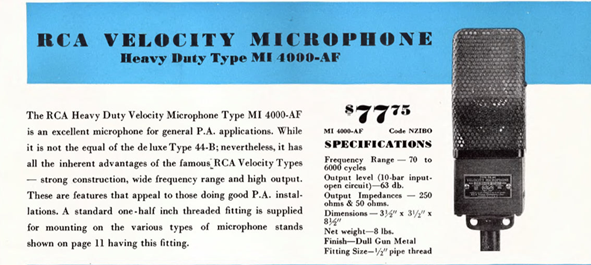|
The RCA 74B Jr. (RCA stock number MI-4036) is probably RCA's most popular ribbon microphone model. Released in 1940, it was widely used for radio, a task its larger counterparts, the 44A, 44B and BX, were actually overqualified for, with their enormous recording range of 30-16,000 Hz. After all, AM radio only had a frequency response of 100-5,000 Hz.
The earlier 74A "Junior Velocity" dated from 1936; that model designated MI-4035 by RCA, and in turn, was the successor to the PB 90, which was released around 1932, meant for broadcasting and public address.
The PB 90 was somewhat smaller than the 44A and, at 70 to 6,000 Hz, had a much more limited frequency response, which was stil more than adequate for radio.
The 74A had a matte black finish and, at 70-8000 Hz, a better frequency range than the PB 90, which was discontinued around 1936.
RCA at first leased their professional microphones, and only to radio statins affiliated to RCA, but around 1935, the "Commercial Sound" division was also established, which began selling simple RCA microphones. Manufacturing these types also needed to be simplified, which lowered their price and at the same time increased profits.
When the large 44BX was released in the late 1930s, RCA also decided to update the 74A so that it resembled its big brother more closely, with a polished chrome grille and black base. Instead of a shock mount, it was equipped with a ball-and-socket mounting, allowing it to be rotated on a stand in the desired recording direction.
Like its bigger brother, it was bidirectional and could therefore be spoken to from either side. Although simpler in design than the 44BX, it had the same warm sound so characteristic of RCA ribbon microphones.
The 74B Jr proved perfectly suited for many tasks, such as PA and broadcast, like on-location reporting, announcements, stage directions, and in small studios.
They were therefore produced in large numbers. This high production volume made the 74B Jr one of the more affordable RCAs, making it popular and desirable, while the large RCA ribbon microphones remained unaffordable for most people.
When television became a mass medium in the US after 1945, it was important that the microphones used did not glare too much in the light. The 74B Jr and 44BX were given a matte grille, and the rest of the housing was painted "Umber Gray," which appeared light brown to most people.
Around this time, Japanese copies of the 74B Jr also came onto the market, these were even more affordable. The 74B Jr remained in production until the early 1950s. It was succeeded in 1950 by the KB-2 series (mic of the month July 2024)
These and many more types feature in my book Witnesses of Words. More information about that can be found at www.witnessesofwords.com
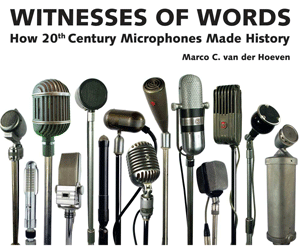
|
|
|
|
|
Top: the elegant Black & Chrome RCA 74B Jr & opened
Below: sound, PB90 ad from 1936, 74B Jr sheet & 74A introduction ad, from 1936 |
|
|
|
 |
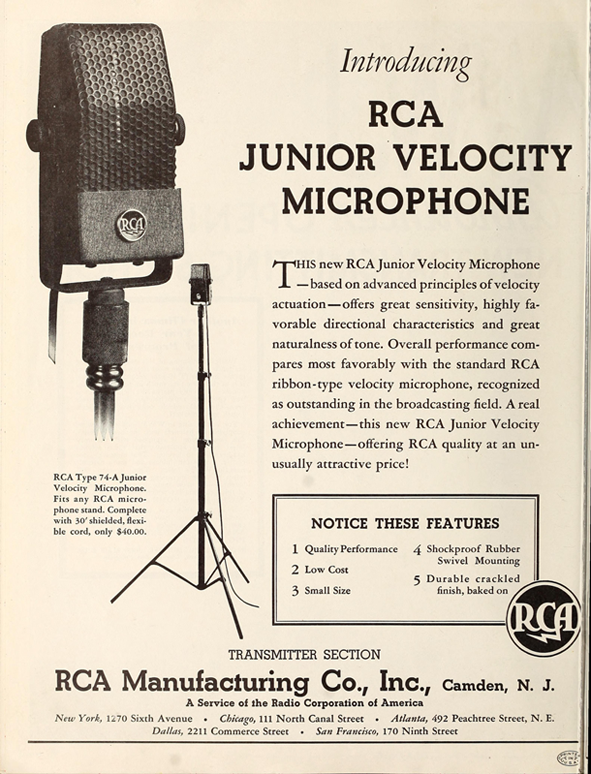 |
|


 Video's
Video's Contact
Contact


